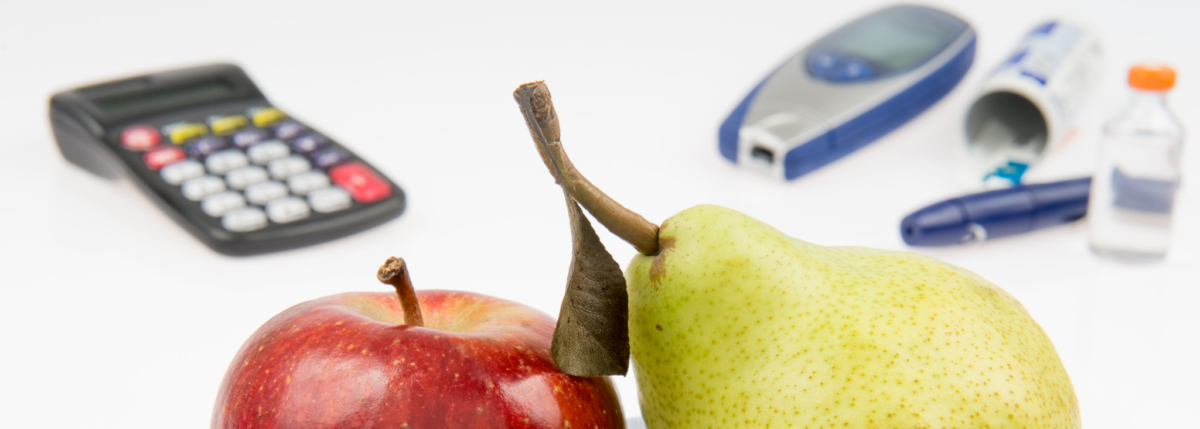Counting Carbs for Type 2 Diabetes
When you were diagnosed with type 2 diabetes, you were most likely told you had to make some changes to your diet. You’ve also most likely heard that you would have to limit or even eliminate your sugar intake by counting carbs. In this article, we provide some information to help you easily learn how to count carbs.
How Carbs Impact Blood Sugar
Carbohydrates are the primary macronutrient that raises blood glucose levels to a greater extent while proteins raise it to a lesser extent. How much or how little they raise them will depend on many other variables such as portion sizes, eating them with protein and fats and of course, the type of carbohydrate.
Carbohydrates
Carbohydrates are one of the energy sources that come from food. Sugar is a carbohydrate, so it raises blood glucose levels. Sugar is not the only food that contains carbohydrates. This nutrient is present in different food groups in different proportions including:
- Cereals and tubers
- Legumes
- Dairy
- Fruits
- Vegetables
- Sugars
Now, as mentioned, not all carbohydrates are the same. We can divide them into two groups
- Simple
- Complex
Simple carbohydrates are the ones that are absorbed quickly, such as regular sugar or refined cereals, and they raise blood glucose faster. Complex carbohydrates on the other hand, raise blood glucose at a slower rate and can be found in whole grains, legumes, and vegetables.
How Many Carbs Should You Eat Per Day?
The amount of carbohydrates you should include in your diet or nutritional plan depends on many factors, including the type of food or diet plan you follow as well as the physical activity you do during the day. The traditional plan suggests that about 60 percent of the total daily kilocalories should be included as carbohydrates. The amount of carbohydrates you require is related to the nutritional and glycemic goals you want to achieve while maintaining balance. This calculation is very personalized and considers different data, including your weight and height.
For some, this percentage is high, and they prefer low carb diets or meal plans. These types of low-carbohydrate diet plans are generating debate, but evidence shows that it is a useful method for some.
Carbohydrate Counting and Type 2 Diabetes
If you use insulin, counting carbohydrates will be a very useful strategy. Your doctor, nutritionist, or diabetes educator will surely tell you how many servings, equivalents, or grams of carbohydrates you should eat per meal. This will depend, as in everything related to management, on an endless number of variables. Generally speaking, it is difficult to suggest plans that contain more than 200 grams of carbohydrates per day.
To give you an idea, a small apple contains about 15 g of carbohydrates while a slice of white bread (to make sandwiches) contains 14 g, but a cup of pumpkin contains approximately 8g. However, although some foods may have a similar amount of carbohydrates, their absorption is different. In addition, the combination of foods with which carbohydrates are mixed is important. The greater the amount of fat, the slower the absorption, so food with high carbohydrate and fat content can give you a constant peak in glucose for a longer time, a good example of this case is pizza.
Counting carbohydrates goes beyond knowing and interpreting labels, knowing how many carbohydrates a food has, and adding up what a meal contains. It also implies identifying what type of carbohydrate it is, its absorption, the effect of combining it with other macronutrients such as proteins and fats, so counting carbohydrates is practically trying to figure out the effect that they will have on blood glucose considering all the factors mentioned.
Are Carbs Bad for People with Type 2 Diabetes?
There are no bad or good carbohydrates, it all depends on the time in which they are consumed. For example, if you are having a long workout, it may be a good idea to eat some foods with an easily absorbed carbohydrate content that can help you keep your blood glucose at the desired level throughout the activity, but these types of carbohydrates are not a good option if you are about to go to sleep or if you are not going to have any activity that allows you to “burn” the glucose they will generate.
Counting carbohydrates may seem like an art but it is not impossible, and if you understand it and put it into practice, living with diabetes will be a little easier and it will help you improve your quality of life.
Things you should consider when counting carbohydrates:
- Pay attention to when you are going to eat carbohydrates and what activity you are going to do afterward. This will allow you to choose the best type of carbohydrate according to its absorption. You can use the glycemic index tables as a guide.
- Learning to read labels makes it easy to count carbohydrates on packaged food. A useful recommendation is to measure and weigh the foods that are not labeled to “develop an eye”. In any case, from time to time you should take up weighing food again so as not to be overconfident since, in the long run, that could lead you to miscalculate.
- Double-check the labels. Many times, we think that a certain product has an “x” amount of carbohydrates, but over time manufacturers can change the composition of said food and modify the number of carbohydrates on the label.
Diabetes education includes providing tools to develop skills and abilities to learn to make decisions, and these decisions include diet.





